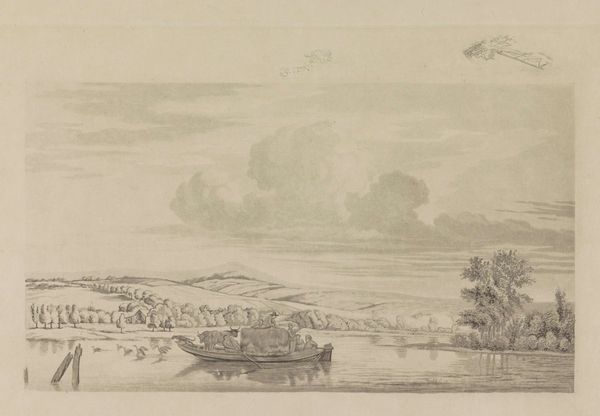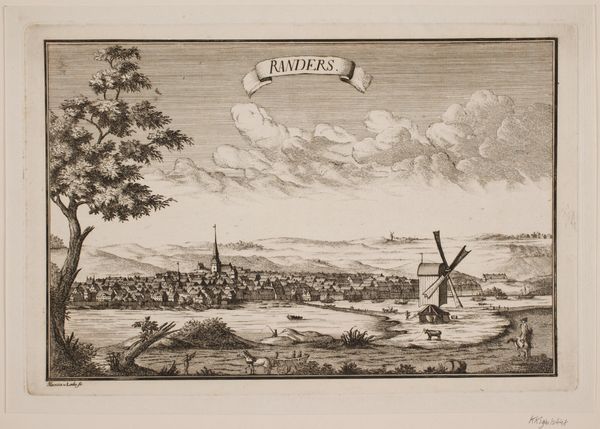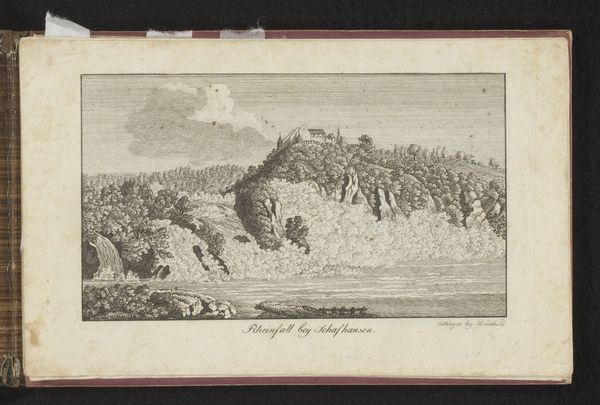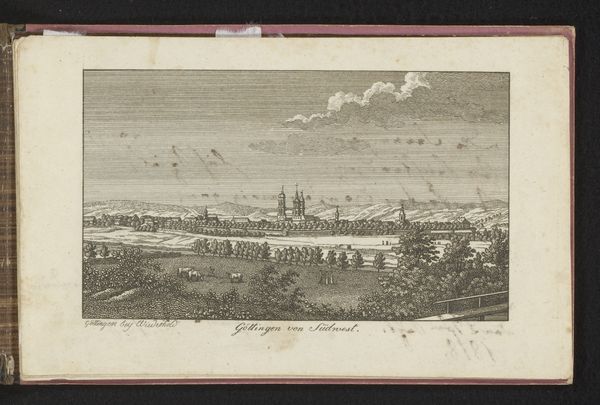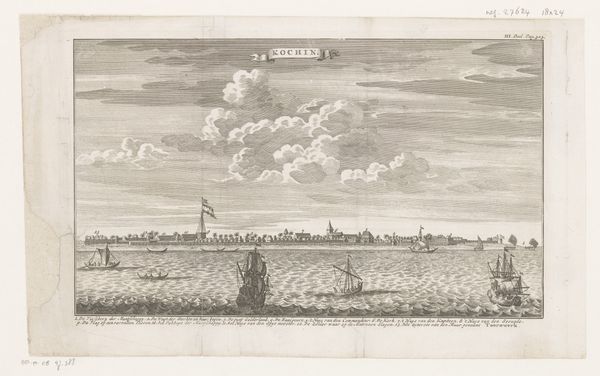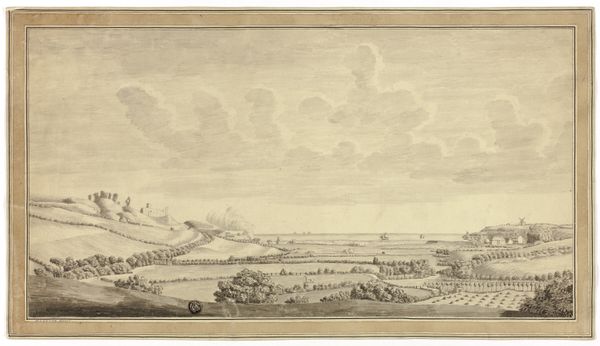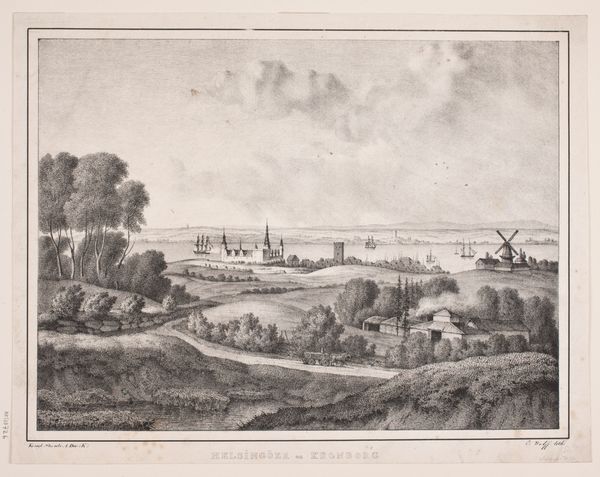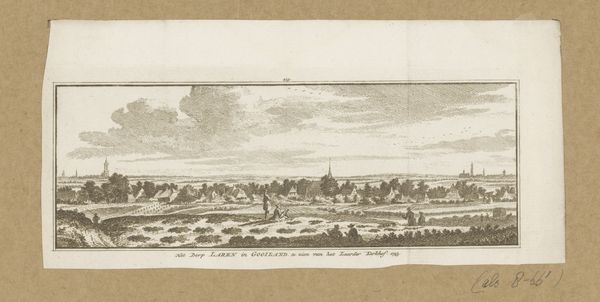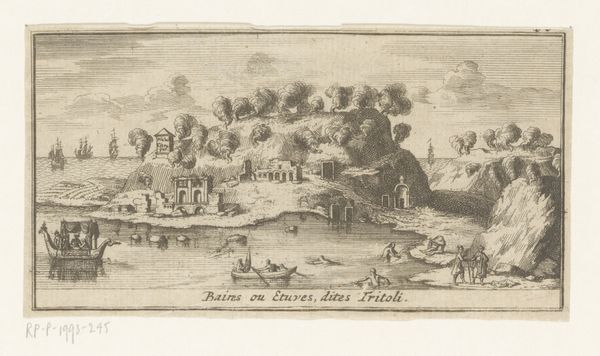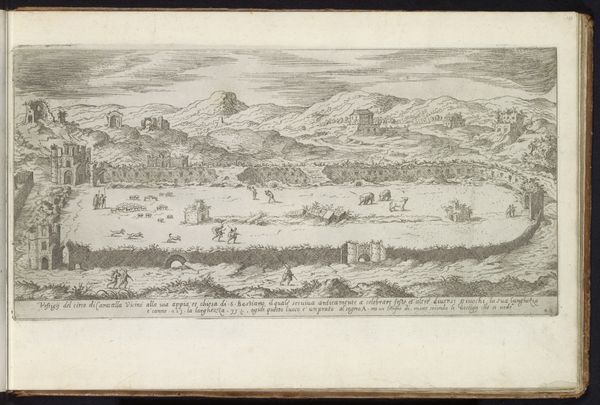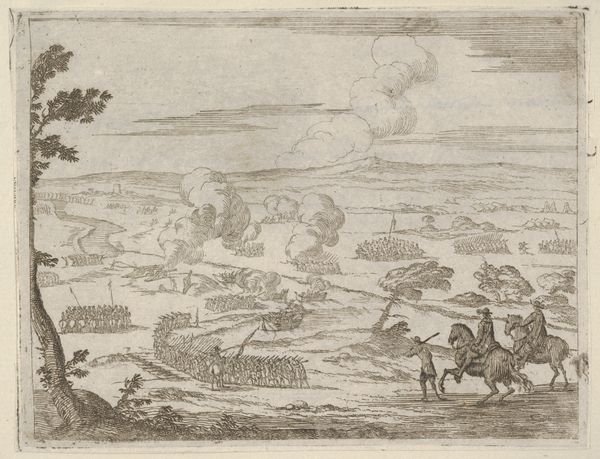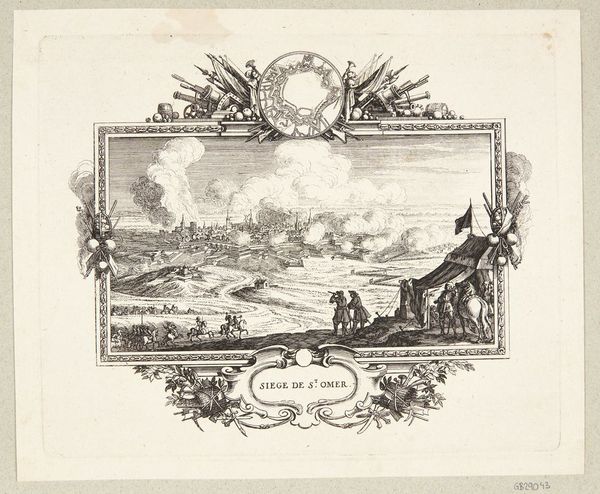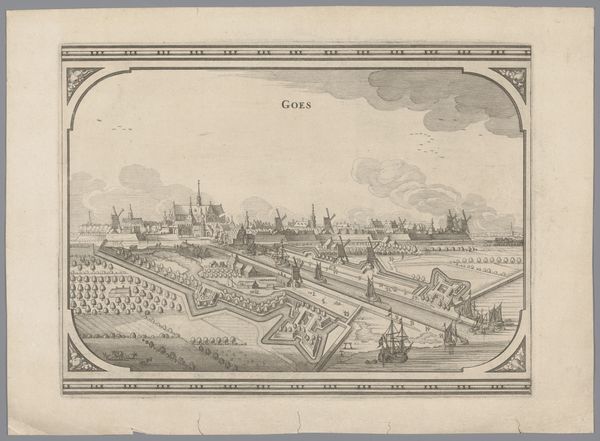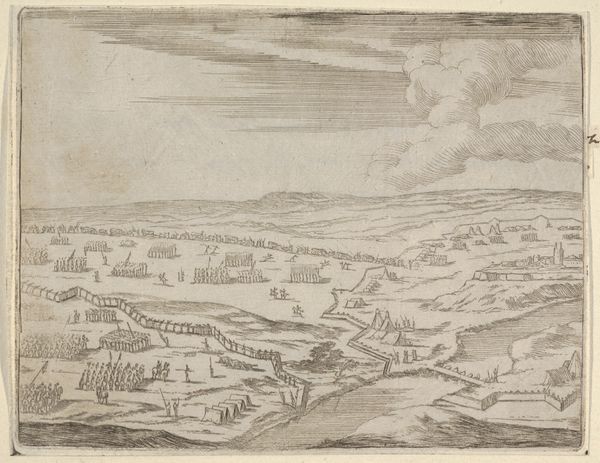
Dimensions: 167 mm (height) x 249 mm (width) (plademaal), 189 mm (height) x 269 mm (width) (bladmaal)
Editor: This is "Korsør," an etching by Alexia von Lode, created between 1767 and 1769. It’s a very detailed cityscape, almost like a map. I’m struck by how small everything looks, almost like a toy set. What stands out to you in this piece? Curator: I see a potent representation of power dynamics. Consider the Baroque period: societal structures were incredibly hierarchical, and cityscapes like this weren’t just depictions of places; they were assertions of control. Think about who commissioned and consumed these images. How did they reinforce the social order? Editor: So, it's not just a pretty picture? Curator: Absolutely not. Look at the way Korsør is presented. It’s orderly, contained, almost sterile. Who benefits from that visual narrative of control and order? Whose stories are being told—and whose are being omitted? These prints were tools. Consider that the development of printmaking itself facilitated the widespread dissemination of information, or rather, a carefully curated version of it. What effect does that have on a society? Editor: I guess I hadn’t thought about it that way. The rigid composition seems intentional now, meant to communicate something about authority. Curator: Exactly. And what about the people? Where are they? How does the absence of everyday life contribute to this statement of control? Think about this image in relation to contemporary discussions of surveillance and representation. It's not just an image of Korsør; it's a carefully constructed ideology. Editor: It’s fascinating how much a seemingly simple etching can reveal about social power. Thanks for pointing that out. Curator: My pleasure. Always remember, art doesn't exist in a vacuum. It's part of an ongoing conversation about who we are and what we value.
Comments
No comments
Be the first to comment and join the conversation on the ultimate creative platform.
